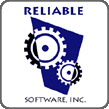 |

|
Windows Workflow Foundation
Workflow applications have unique constraints:
-
They often have to wait days, weeks, or months for events to
occur, or for other activities to finish.
-
They shouldn't consume processor cycles while waiting.
-
They must survive machine resets.
-
They often require asynchronous control flow.
-
They often require the use of a compensation model, instead of
traditional database transactions.
Meeting these requirements force developers to build a complex
workflow infrastructure into their applications.
Windows Workflow Foundation (WF) provides a workflow infrastructure.
With this WF-supplied runtime engine and a framework for
implementing workflows, you can focus on the business logic, rules,
and policies that you understand, rather than building workflow
infrastructure plumbing.
In this 3 day course, you'll write several applications that will
demonstrate how to build a range of workflow applications.
What you will learn
-
Why did Microsoft create Windows Workflow Foundation
-
The Windows Workflow Foundation architecture
-
The relationships between host, activity, and workflow
-
How to use the workflow compiler
-
How to use XAML to design workflows
-
How to design Workflows with and without Visual Studio.NET 2005
-
How to use the Visual Studio.NET 2005 Workflow Designer
-
How to use the features of the Windows Workflow Runtime class
-
How to design and build a Workflow Host
-
How to build Activities with Parallel Paths
-
How to use the Built-in Flow Control Activities
-
How to call External Methods from a Workflow
-
How to handle Events in a Workflow
-
How to use Composite Activities
-
How to Pass Data in and out of Workflows
-
How to use Workflow Rules Engine
-
How the Workflow and the Runtime interact
-
How to build Sequential Workflows
-
How to build State Machine Workflows
-
How to build Data or Policy Driven Workflows
-
How to handle Errors in Workflow
-
Understand Workflow Persistence
-
How to use ACID Transactions in a Workflow
-
How to use Compensation in a Workflow
-
How to build Custom Workflow Activities
-
How to track the state of your workflow
Course Outline
Overview of Workflow
Foundation (WF)
-
What is Workflow?
-
What is Windows Workflow?
-
When to use and when not to use WF
-
Relationship between WF and BizTalk
-
Windows Workflow Architecture
-
Workflow Foundation Tools
Building
Simple Workflows
-
Workflows and Activities
-
Windows Workflow Foundation Runtime
-
Hosts and Workflow Instances
-
Windows Workflows Foundation and XAML
-
Windows Workflow Foundation Designer for Visual
Studio 2005
-
Passing Data in and Out of Workflows
-
Composite Activities
-
Basic Workflow Activities included with Workflow Foundation
-
Control Flow
-
Sequence and Parallel Activities
-
Calling External Methods
-
Events
-
Workflow Runtime Interaction
Different Styles of
Workflow
-
Sequential Workflows
-
State Machine Workflows
-
Data or Rules Driven Workflows
Advanced Workflow
Scenarios
-
Workflow Error Handling
-
Workflow Persistence
-
Dynamic updates of running workflows
-
Workflow Tracking
-
Transactions and Compensation
Custom Activities
-
Inadequacy of Basic Workflow Activities
-
Custom Activities Reveal the Real Power of Windows Workflow
|
 |

